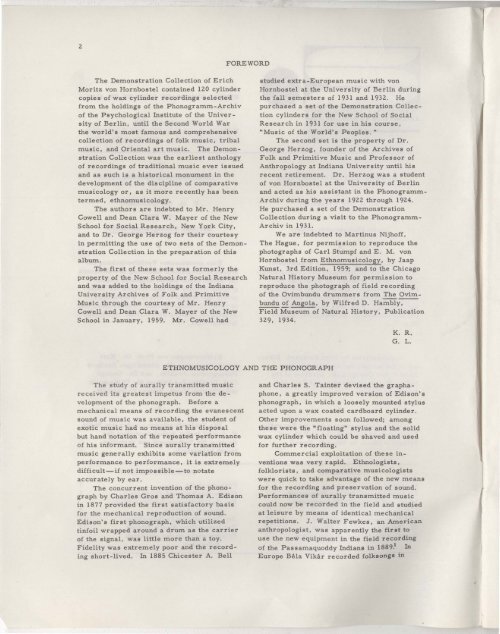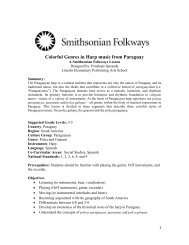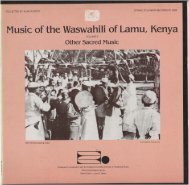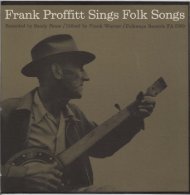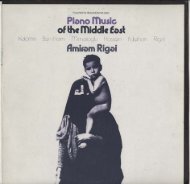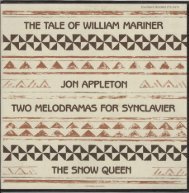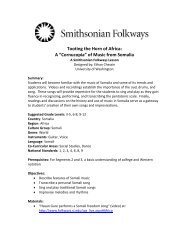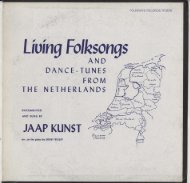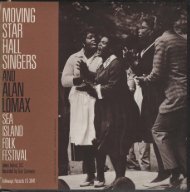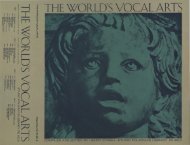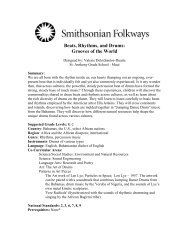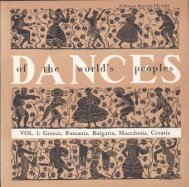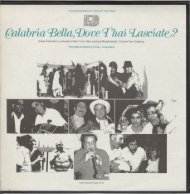FW04175.pdf
FW04175.pdf
FW04175.pdf
Sie wollen auch ein ePaper? Erhöhen Sie die Reichweite Ihrer Titel.
YUMPU macht aus Druck-PDFs automatisch weboptimierte ePaper, die Google liebt.
2FOREWORDThe Demonstration Collection of ErichMoritz von Hornbostel contained 120 cylindercopies of wax cylinder recordings selectedfrom the holdings of the Phonogramm-Archivof the Psychological Institute of the Universityof Berlin, until the Second World Warthe world's most famous and comprehensivecollection of recordings of folk music, tribalmusic, and Oriental art music. The DemonstrationCollection was the earliest anthologyof recordings of traditional music ever issuedand as such is a historical monument in thedevelopment of the discipline of comparativemusicology or, as it more recently has beentermed, ethnomusicology.The authors are indebted to Mr. HenryCowell and Dean Clara W. Mayer of the NewSchool for Social Research, New York City,and to Dr. George Herzog for their courtesyin permitting the use of two sets of the DemonstrationCollection in the preparation of thisalbum.The first of these sets was formerly theproperty of the New School for Social Researchand was added to the holdings of the IndianaUniversity Archives of Folk and PrimitiveMusic through the courtesy of Mr. HenryCowell and Dean Clara W. Mayer of the NewSchool in January, 1959. Mr. Cowell hadstudied extra-European music with vonHornbostel at the University of Berlin duringthe fall semesters of 1931 and 1932. Hepurchased a set of the Demonstration Collectioncylinders for the New School of SocialResearch in 1931 for use in his cour se,"Music of the World's Peoples . "The second set is the property of Dr.George Herzog, founder of the Archives ofFolk and Primitive Music and Professor ofAnthropology at Indiana University until hisrecent retirement. Dr. Herzog was a studentof von Hornbostel at the University of Berlinand acted as his assistant in the PhonogrammArchiv during the years 1922 through 1924.He purchased a set of the DemonstrationCollection during a visit to the PhonogrammArchivin 1931.We are indebted to Martinus Nijhoff,The Hague, for permis sion to reproduce thephotographs of Carl Stumpf and E. M. vonHornbostel from Ethnomusicology, by JaapKunst, 3rd Edition, 1959; and to the ChicagoNatural History Museum for permission toreproduce the photograph of field recordingof the Ovimbundu drummers from The Ovim------bundu of Angola, by .wilfred D. Hambly,Field Museum of Natural History, Publication329, 1934.K. R.G. L.ETHNOMUSICOLOGY AND THE PHONOGRAPHThe study of aurally transmitted musicreceived its greatest impetus from the developmentof the phonograph. Before amechanical means of recording the evanescentsound of music was available, the student ofexotic music had no means at his disposalbut hand notation of the repeated performanceof his informant. Since aurally transmittedmusic generally exhibits some variation fromperformance to performance, it is extremelydifficult-if not impossible-to notateaccurately by ear.The concurrent invention of the phonographby Charles Gros and Thomas A. Edisonin 1877 provided the first satisfactory basisfor the mechanical reproduction of sound.Edison's first phonograph, which utilizedtinfoil wrapped around a drum as the carrierof the signal, was little more than a toy.Fidelity was extremely poor and the recordingshort-lived. In 1885 Chicester A. Belland Charles S. Tainter devised the graphaphone,a greatly improved version of Edison'sphonograph, in which a loosely mounted stylusacted upon a wax coated cardboard cylinder.Other improvements soon followed; amongthese were the "floating" stylus and the solidwax cylinder which could be shaved and usedfor further recording.Commercial exploitation of these inventionswas very rapid. Ethnologists,folklorists. and comparative musicologistswere quick to take advantage of the new meansfor the recording and preservation of sound.Performances of aurally transmitted musiccould now be recorded in the field and studiedat leisure by means of identical mechanicalrepetitions. J. Walter Fewkes, an Americananthropologist, was apparently the first touse the new equipment in the field recordingof the Passamaquoddy Indians in 1889. 1InEurope Bela Vikar recorded folksongs in


